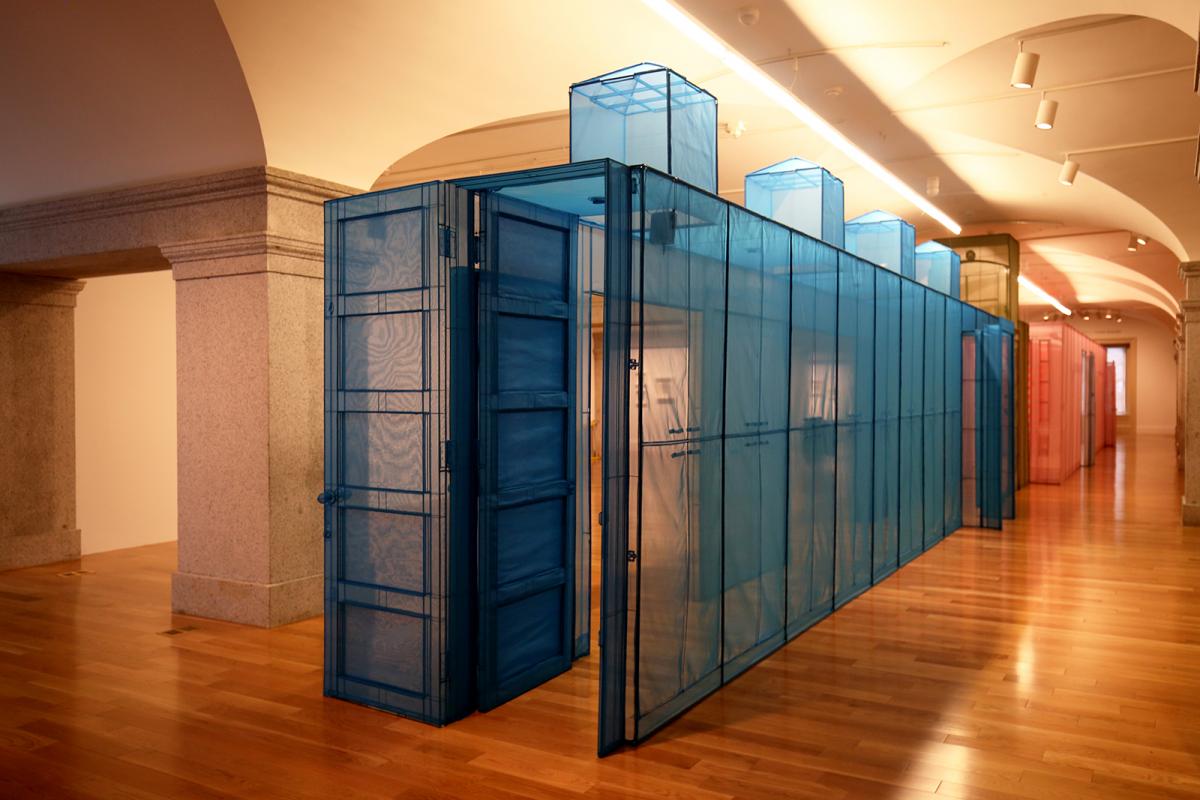
Anne Showalter, Digital Interpretation Specialist at SAAM, sat down with Sarah Newman, the James Dicke Curator of Contemporary Art at SAAM, to talk about the recently opened exhibition Do Ho Suh: Almost Home.
Tell us a little bit about the artist.
Do Ho Suh was born in Korea in 1962 and came to the United States at the age of 29. He stayed here for many years until he moved with his family to Europe in 2016. Now, he spends his time in-between New York, London, and Seoul, Korea. Almost Home is his own very personal history of migration that has led to the desire to capture his past and hold on to it and to forge a connection between places he has left and the life he leads today.
What are the sculptures made of?
Do Ho Suh makes his sculptures out of a lightweight translucent material that’s typically used in Korean summer wear. He says that he was drawn to the material because it was cheap and readily available. As much as the fabric doesn’t have any inherent value, it represents years of training with Korean artisans. All of Do Ho’s work is handmade and hand stitched. The craftsmanship is the result of years of training with Korean artisans. Hours and hours and months of work go into making each object. The new work that we are showing for the first time in our exhibition—the corridor from his childhood home in Seoul, Korea—was made by Do Ho and a number of artists in Do Ho’s studio who have been trained in the traditional sewing techniques.
How does the artist conceptualize this idea of home?
Do Ho has spoken about wanting to create a suitcase home. Something that he can pack up and take with him wherever he moves. To a large extent his artwork does that. You can fold it and erect it wherever you are. Even though he has created his own version of a suitcase home, the sculptures are obviously not the real thing. His work inhabits a place between absence and presence.
In addition to the fabric architectural sculptures, can you tell us about the drawings and specimens?
A number of the drawings in the show are made of thread. He has developed this process in which he embeds thread into handmade paper. He actually draws with multicolored thread. The drawings really give a sense of the emotional stakes behind the architectural structures. Do Ho’s specimens represent objects and appliances from different places that he has lived throughout his life. You get the sense that he is racking his memory and trying to recreate these various homes, piecing together and cobbling together memories to create a perfect home, which is obviously impossible, but it’s this quest that he has.
What do you hope visitors learn from the exhibition?
At various times in his life, Do Ho Suh has considered himself Korean, American, and European. He never fully felt a part of whatever culture he was in. He has felt like every place he has lived is a part of his identity now. His work tries to replicate that. When you are walking through it you have the experience of being transported through time and space, being able to visit multiple times and places at once.
Learn more about the artist and this exhibition: Do Ho Suh: Almost Home.
On Wednesday, April 18 at 5:30 pm, join Sarah Newman for a gallery talk in the exhibition, Do Ho Suh: Almost Home.
Related video: Do Ho Suh: Almost Home at the Smithsonian American Art Museum






















